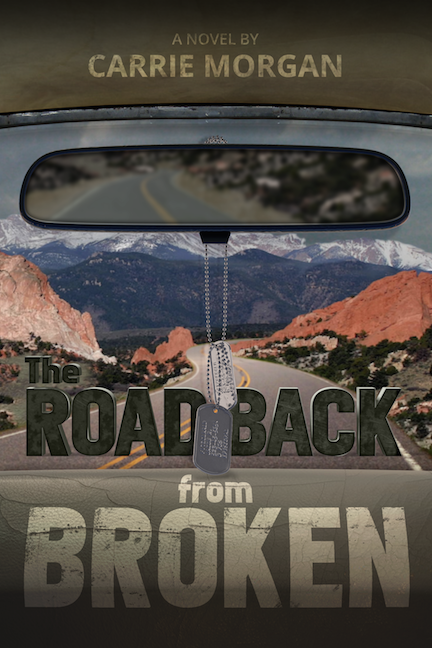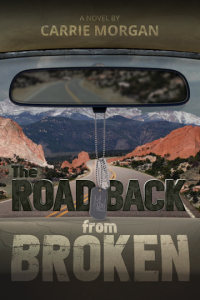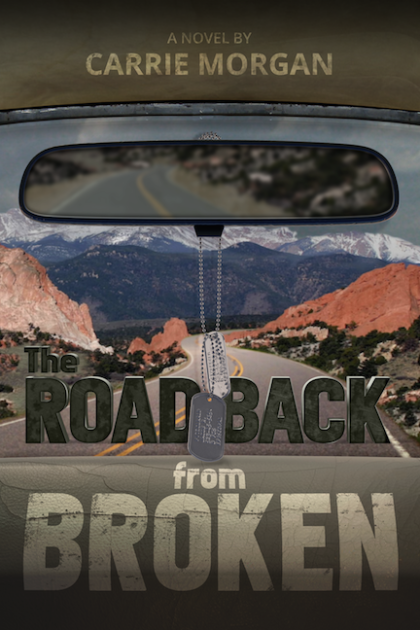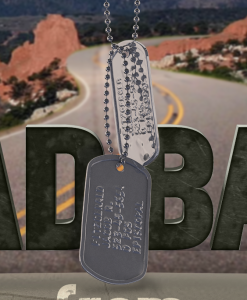I know, I know. It’s been awhile since I last blogged about my path to publication.
A lot has changed since I last wrote about the process. In my last post on this subject, I outlined why I had decided to make a run at getting my novel The Road Back From Broken traditionally published. I’ve long dreamed of writing and publishing a book. From the time I was a teenage sales clerk at a mall bookstore, my dream was always to see my book on the shelves.
Seven months after I started querying literary agents in pursuit of a traditional publishing deal, I’ve decided on a change of course. I am abandoning my initial strategy in favor of an entirely different path. After receiving ample feedback from literary agents, published authors, editors, and others wise to the ways of the traditional half of the publishing industry, it’s become clear that the goals I had when I set out to write Road can only be met by publishing the book myself.
Some people will assume that I’m impatient and that I gave up too soon, or that I am too stubborn to accept feedback, but the reality is, the traditional publishing market itself made the choice clear.
While I received more than my fair share of form letter rejections from agents (“After careful consideration, I have unfortunately come to the conclusion that this is not something I wish to pursue, and therefore, must pass”), I also received a number of rejections that revealed the reason I wasn’t getting requests. The gist of these substantive rejections was that the agents felt that my book, while very well-written, had no viable commercial market; or, put a different way, they didn’t think they’d be able to sell my book to a publisher’s acquisitions editor. In a way, I can’t really blame them. Why would an agent take a chance on a book like mine when they can take on clients who write in more popular genres/categories like romance, women’s fiction and young adult?
A few people suggested I rewrite Road to fit into one of those trendier, more popular categories. Others said it didn’t matter, because women don’t want to read about a male protagonist (one agent said that) and men don’t want to read about feelings and emotions (yes, an agent said that, too). I wrote a book that challenges certain widely-held stereotypes about military families, and I saw rejections that were based on the assumption that those stereotypes are, in fact, true.
The story I set out to tell in Road is not one I can tell if I gut the novel and rewrite it from the point of view of the twelve year-old son, or solely from the point of view of the male soldier’s wife. (For what it’s worth, Road’s sequel, What Fury Left Behind, will focus primarily on the wife’s point of view.) I didn’t write this book to make millions. I wrote this book to tell a story I think needs telling, a story that hasn’t really been told before, and not to fit into some publishing house editor’s preconceived notions about men, women and the military.
So I am going to publish Road and its sequel myself. In a way, that means (for now) I’m abandoning my longtime dream of seeing my book with a famous imprint sitting on the shelf at Barnes & Noble. But in another, more important way, I’m not abandoning that dream, but rather fulfilling it via other means, means that didn’t exist when I was a sixteen year-old clerk at the B. Dalton Bookseller at Southglenn Mall.
When I worked in a bookstore (circa 1990-93), there was no such thing as Amazon. The ubiquitous Barnes & Noble big-box stores that anchor modern malls didn’t exist (the first ones opened in the early ’90s). The concept of ebooks as we know it today didn’t exist either, which makes sense because email and the internet were alien to most people in 1992.
We live (and read, and write) in a very different world than existed ten or twenty years ago. B. Dalton Bookseller, the huge bookstore chain I worked for, no longer exists, and the venerable Southglenn Mall was torn down in 2006. The biggest retail booksellers in the world are Amazon and Barnes & Noble, which acquired my old employer in 1987. But they aren’t the only places people buy books. Readers can buy ebooks through a number of other outlets, including the iBookstore, Smashwords, Oyster, Scribd, and Lulu.com. Readers who want to read their books in paperback can buy them at a retail store or online, where small publishers and self-published authors can fulfill orders via print on demand, which eliminates the need to maintain an inventory of preprinted books.
Other things have changed since 1990. Back in the day, an agented author would sign with a publisher and receive a sizable advance, and the publisher would handle the rest of the process, including the marketing of the book. Now, even agented, traditionally published authors must do much of their own marketing. The size of the average advance is at an all-time low (adjusted for inflation). Simply put, traditional publishing isn’t what it used to be, as far as authors are concerned. It’s not the only way to get a book into a reader’s hands, and in many cases, it’s not the most lucrative.
When I saw how many “nicely-written but has no market” responses I got to my pitch, it became clear that the only way to get Road published via the traditional agent-publisher route was to rewrite Road to fit into other people’s concept of what the book should be. Some people told me to wait, to write something else, and maybe the traditional publishing markets would someday change to better accommodate Road. Others told me to try a small speciality publisher, but most of those have specific market niches and Road didn’t quite fit into any of them.
The thing is, I know Road has a market. It’s probably a small market, if I’m being honest with myself. There’s no doubt that market is substantially smaller than the market for, e.g., young adult or romance, but I don’t really care. I’m not in this for money alone and I’m not quitting my day job. The size of the market doesn’t matter to me as much as telling Road’s story, the story I wrote, to the people out there who want to read that story—to the people who have been erased by the wider publishing world that insists that they, in fact, don’t exist.
Maybe the agents are right and Manhattan’s big publishing houses aren’t interested in investing money in a book that may only sell a few thousand copies (or fewer). That’s fine. I’m lucky that I have the time and money to invest in publishing this book myself. If they aren’t willing to bet on Road, I am. I’m willing to wager that the market that the agents say does not exist actually does exist, even if only on a very small scale. And yes, that means it may cost me a couple thousand dollars to publish and market Road, money that I may never earn back. There’s a very good chance I’ll lose money on this book. That said, to me, every penny I spend is worth it if the story I’ve told is meaningful in the life of one reader.
So I’m happy to let you all know that The Road Back From Broken will be published this fall. My target date for release is October 20, 2015, and barring any unexpected technical hiccups, you will be able to buy Road in ebook and paperback on Amazon on that date.
Stay tuned to this blog for a look at Road’s cover, which I hope to be able to reveal later this month.


![CarrieMorgan_FaceBook_851x315_004[1]](https://carriemorgandotnet.files.wordpress.com/2015/10/carriemorgan_facebook_851x315_0041.png?w=300&h=111)

